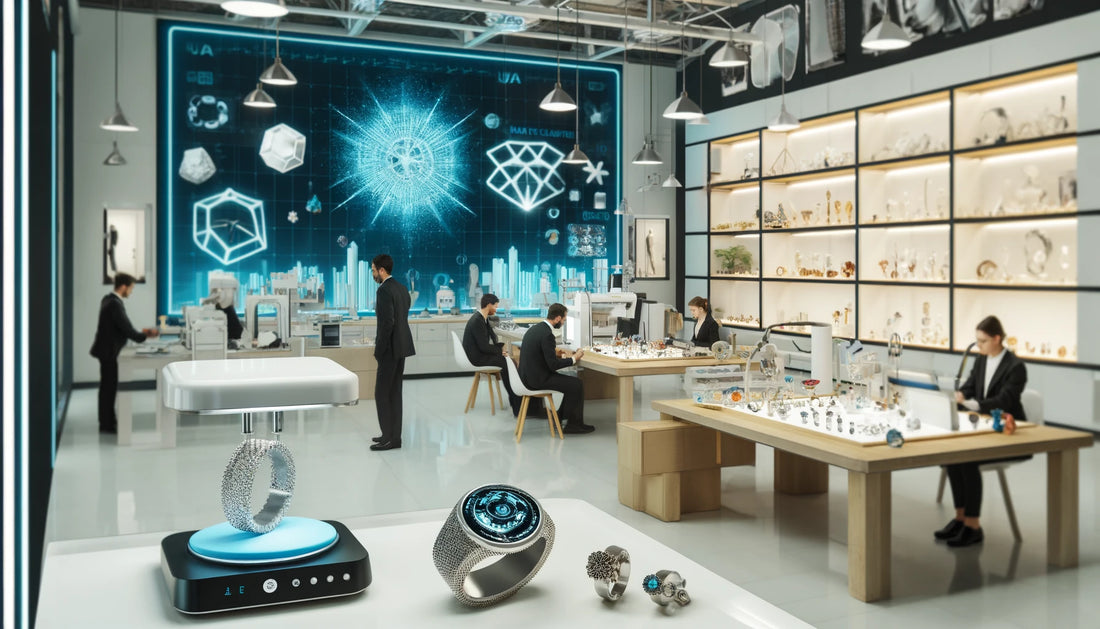Jewelry making is an art form that has evolved over centuries, with each era bringing new trends and innovations. As we look to the future, several exciting developments are poised to revolutionize the way jewelry is designed, created, and worn. From technological advancements to sustainable practices, the future of jewelry making is bright and full of potential.
**3D Printing: The Next Frontier**
One of the most groundbreaking innovations in jewelry making is the advent of 3D printing. This technology allows designers to create intricate and complex designs that would be nearly impossible to achieve by traditional methods. With 3D printing, the possibilities are limitless. Jewelers can experiment with new shapes, patterns, and structures, pushing the boundaries of creativity. Additionally, 3D printing enables rapid prototyping, allowing designers to quickly produce and test their creations before committing to final production.
Moreover, 3D printing significantly reduces waste. Traditional jewelry making often involves carving away material to create the desired shape, resulting in substantial waste. In contrast, 3D printing is an additive process, building up the material layer by layer and using only what is necessary. This not only makes the process more efficient but also more environmentally friendly.
**Sustainable and Ethical Practices**
As consumers become more environmentally conscious, the demand for sustainable and ethically sourced jewelry is growing. The future of jewelry making is likely to see a significant shift towards sustainable practices. This includes the use of recycled materials, such as gold and silver, as well as lab-grown diamonds and gemstones. Lab-grown stones are chemically and physically identical to their natural counterparts but are created in controlled environments, eliminating the need for mining and its associated environmental impact.
In addition to materials, transparency in the supply chain is becoming increasingly important. Consumers want to know where their jewelry comes from and that it has been sourced ethically. This has led to the rise of blockchain technology in the jewelry industry, which can provide a verifiable record of a piece’s journey from mine to market. By ensuring transparency, blockchain can help build consumer trust and promote responsible sourcing practices.
**Wearable Technology**
The integration of technology into jewelry is another trend shaping the future of this industry. Wearable tech is no longer limited to smartwatches and fitness trackers. Designers are now creating beautiful pieces of jewelry that also serve practical functions. For example, rings and bracelets can be equipped with NFC (Near Field Communication) chips, allowing wearers to make contactless payments or unlock smart devices with a simple touch.
Furthermore, health and wellness monitoring is becoming a key feature in smart jewelry. Pieces embedded with sensors can track vital signs, monitor sleep patterns, and even provide stress management tools. These innovations not only add functionality to jewelry but also make it an essential part of a modern, tech-savvy lifestyle.
**Customization and Personalization**
Personalization is a trend that is here to stay. Consumers are increasingly seeking unique, one-of-a-kind pieces that reflect their individual style and personality. Advances in technology, such as CAD (Computer-Aided Design) software and laser engraving, have made it easier than ever to create customized jewelry. Whether it’s engraving a special message or designing a completely bespoke piece, the ability to offer personalized jewelry sets designers apart in a competitive market.
Additionally, augmented reality (AR) is making waves in the jewelry shopping experience. AR allows customers to virtually try on pieces from the comfort of their own homes. By using their smartphones or AR-enabled devices, shoppers can see how a piece of jewelry will look on them before making a purchase. This not only enhances the shopping experience but also reduces the need for physical try-ons, which can be especially beneficial in a post-pandemic world.
**Innovative Materials**
The exploration of new materials is another exciting aspect of the future of jewelry making. Beyond traditional metals and gemstones, designers are experimenting with unconventional materials such as wood, resin, and even recycled plastic. These materials offer unique aesthetic qualities and can be more sustainable options.
For example, jewelry made from recycled ocean plastic not only looks striking but also raises awareness about the importance of ocean conservation. Similarly, pieces incorporating bio-based materials, such as plant-based resins, are gaining popularity for their eco-friendly attributes. By embracing these innovative materials, jewelry designers can create pieces that are both beautiful and meaningful.
The future of jewelry making is a blend of tradition and innovation. As technology advances and consumer preferences shift, jewelers are finding new ways to create stunning, sustainable, and functional pieces. Whether through the use of 3D printing, sustainable practices, wearable technology, customization, or innovative materials, the jewelry industry is poised for a transformative era. These trends and innovations not only enhance the beauty and craftsmanship of jewelry but also align with the growing demand for ethical and personalized products. As we look ahead, it’s clear that the future of jewelry making is as dazzling and dynamic as the pieces it produces.
